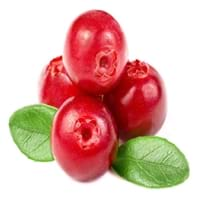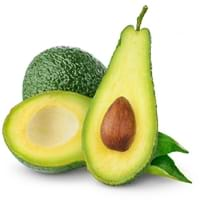Health Benefits
Cancer prevention, Heart care, Kidney stone treatment, Scurvy treatment, Ulcer prevention
Cancer prevention, Natural detoxification, Osteoporosis prevention, Protection from chronic disease
General Benefits
Anti-inflammatory properties, Boosts immune system, Digestive aid, Fights against infections, Strengthens bones
Boosts immune system, Controls blood pressure, Digestive aid, Improves eye vision, Maintains healthy cholesterol level
Skin Benefits
Anti-aging benefits, Reduces wrinkles, Skin rejuvenation, Treatment of acne
Brightens and lightens complexion, Reduces wrinkles, Skin cleansing, Treatment of dark spots
Hair Benefits
Promotes longer and healthier hair, Protects hair, Treatment of dandruff
Acts as moisturizer, Good conditioner, Protects hair, Regulates hair growth, Rejuvenates scalp, Remedy for split ends, Shiny hair, Softening mask
Allergy Symptoms
Anaphylaxis, Breathing difficulty, Itching, Skin rash, Swelling of mouth, tongue or lips
Abdominal pains, Anaphylaxis, Inflammation, Itching, Latex Allergy, Nasal congestion, Skin Rashes, Swallowing difficulties, Swelling, Upset stomach, Vomiting, Wheezing
Side Effects
Allergic reaction, Diarrhoea, Nausea, Stomach pain, Vomiting
Allergic reaction, Hypersensitivity, Weight gain
Best Time to Eat
Any time except an hour after meal, Don't consume at night and before bed
Along with meal, As a snack in the late afternoon, Don't consume at night and before bed, Don't eat after meal
Vitamin B5 (Pantothenic Acid)
Vitamin C (Ascorbic Acid)
Vitamin K (Phyllochinone)
Phytosterol
Not Available
Calories in Fresh Fruit with Peel
Calories in Fresh Fruit without Peel
Not Available
Not Available
Calories in Canned Form
Not Available
Type
Berry
Berry, Tree fruit, Tropical
Varieties
Early Black, Howes, Ben Lear and Stevens
Bacon, Fuerte, Gwen, Hass, Lamb Hass, Pinkerton, Reed and Zutano
Taste
Bitter, Tart
Buttery
Origin
North America
Mexico, Central America
Soil Type
Clay, Sandy, Well-drained
Decomposed Granite, Limestone, Sandy loam, Well-aerated
Climatic Conditions
Warm
Humid, Without frosts
Facts about
- Europeans thought the cranberry blossom looked like the head of a sandhill crane, hence the name Cranberry.
- They are also known as bounce berries as they bounce when they ripe.
- Cranberries do not grow in water.
- The oldest living avocado tree is found in University of California and was planted in 1879.
- Avocados can be swapped for butter in Baked Goods Recipes.
- Avocado ripens more quickly with a banana or an apple around.
Top Producer
United States of America
Mexico
Other Countries
Azerbaijan, Belarus, Bulgaria, Canada, Latvia, Macedonia, NA, Romania, Tunisia, Ukraine
Chile, China, Colombia, Dominican Republic, Indonesia, Kenya, Mexico, Peru, Rwanda, United States of America
Top Importer
Europe
United States of America
Top Exporter
United States of America
Mexico
Botanical Name
Vaccinium Macrocarpon
Persea Americana
Synonym
Oxycoccus macrocarpus
Persea Gratissima
Subkingdom
Tracheobionta
Tracheobionta
Division
Magnoliophyta
Magnoliophyta
Class
Magnoliopsida
Magnoliopsida
Subclass
Dillenhidae
Magnollidae
Family
Ericaceae
Lauraceae
Species
Vaccinium macrocarpon
P. Americana
Generic Group
Heath
Laurel
Difference Between Cranberry and Avocado
We might think that Cranberry and Avocado are similar with respect to nutritional value and health benefits. But the nutrient content of both fruits is different. Cranberry and Avocado Facts such as their taste, shape, color, and size are also distinct. The difference between Cranberry and Avocado is explained here.
The amount of calories in 100 gm of fresh Cranberry and Avocado with peel is 46.00 kcal and 160.00 kcal and the amount of calories without peel is Not Available and Not Available respectively. Thus, Cranberry and Avocado belong to Low Calorie Fruits and High Calorie Fruits category.These fruits might or might not differ with respect to their scientific classification. The order of Cranberry and Avocado is Ericales and Laurales respectively. Cranberry belongs to Ericaceae family and Avocado belongs to Lauraceae family. Cranberry belongs to Vaccinium genus of Vaccinium macrocarpon species and Avocado belongs to Persea genus of P. Americana species. Beings plants, both fruits belong to Plantae Kingdom.









